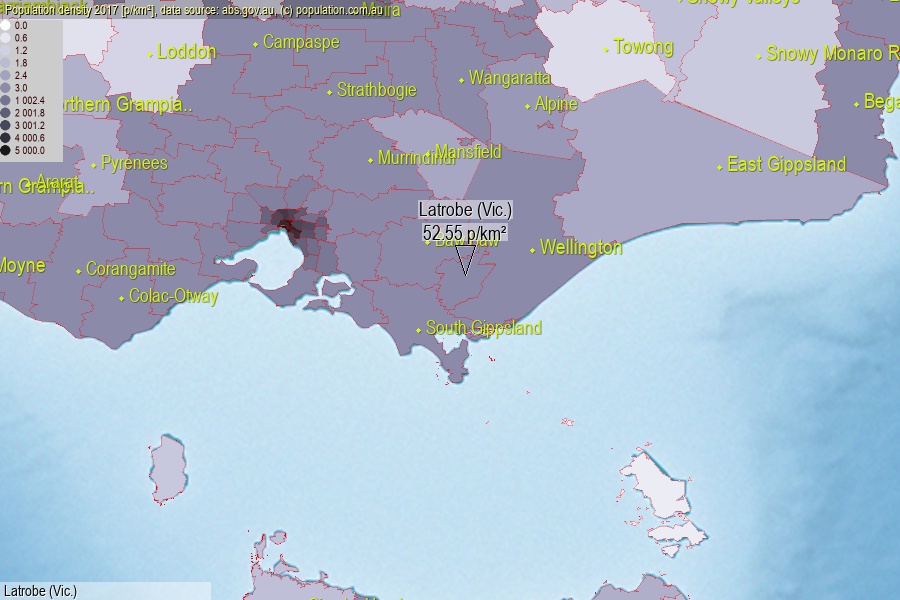 population.com.au
population.com.auLast official estimated population of Latrobe (Vic.) City (as Local Government Area) was 74 921 people (on 2017-06-30)[2]. This was 0.30% of total Australian population and 1.165% of VIC population. Area of Latrobe (Vic.) is 1 425.60 km², in this year population density was 52.55 p/km² . If population growth rate would be same as in period 2016-2017 (+0.4%/yr), Latrobe (Vic.) population in 2025 would be 77 357. [0]



Click to enlarge. Latrobe (Vic.) is located in the center of the images.
Population [people], population density [p./km²] and population change [%/year] [2]
[1996-2001] -0.44 %/Y
[2001-2002] +0.00 %/Y
[2002-2003] +0.08 %/Y
[2003-2004] +0.17 %/Y
[2004-2005] +0.27 %/Y
[2005-2006] +0.85 %/Y
[2006-2007] +0.72 %/Y
[2007-2008] +0.92 %/Y
[2008-2009] +0.84 %/Y
[2009-2010] +1.07 %/Y
[2010-2011] +0.97 %/Y
[2011-2012] +0.29 %/Y
[2012-2013] +0.16 %/Y
[2013-2014] +0.01 %/Y
[2014-2015] +0.18 %/Y
[2015-2016] +0.48 %/Y
[2016-2017] +0.40 %/Y
[0] Calculated with linear interpolation from officially estimated population
[1] Read more about LGA and Australian Statistical Geography Standard (ASGS) on abs.gov.au
[2] Population data from Australian Bureau of Statistics (Population and density: 2017; change: 2016-2017)
[3] Digital Boundaries: Australian Statistical Geography Standard (ASGS) 2016.